SS 563-1:2010(2017) – Code of Practice for Emergency Lighting and Exit Signs for Buildings, Part 1: Emergency Lighting System is the Singapore Standard that provides guidelines and requirements for the design, installation, and maintenance of emergency lighting systems in buildings. The goal is to ensure safety by providing adequate illumination during emergencies, such as power outages, to facilitate safe evacuation.
Key Aspects of SS 563-1:2010(2017)
1. Scope and Application
- Scope: This standard covers emergency lighting systems, including escape route lighting, standby lighting, and exit signs.
- Application: Applicable to all building types, including residential, commercial, industrial, and public buildings.
SS 563-1:2010(2017) System Design
2. Design Requirements
- Illumination Levels: Ensure adequate illumination levels to allow safe evacuation. The minimum illumination level for escape routes is typically 1 lux along the centerline.
- Escape Routes: Identify and illuminate all escape routes, including stairways, corridors, and exit doors.
- High-Risk Areas: Provide higher illumination levels in high-risk areas where tasks involving potential hazards are performed.
3. Types of Emergency Lighting
- Escape Route Lighting: Illuminate escape routes to enable occupants to evacuate safely.
- Open Area (Anti-Panic) Lighting: Provide lighting in open areas to prevent panic and ensure safe movement towards escape routes.
- High-Risk Task Area Lighting: Provide sufficient lighting in areas where hazardous tasks are performed to ensure safe shutdown and evacuation.
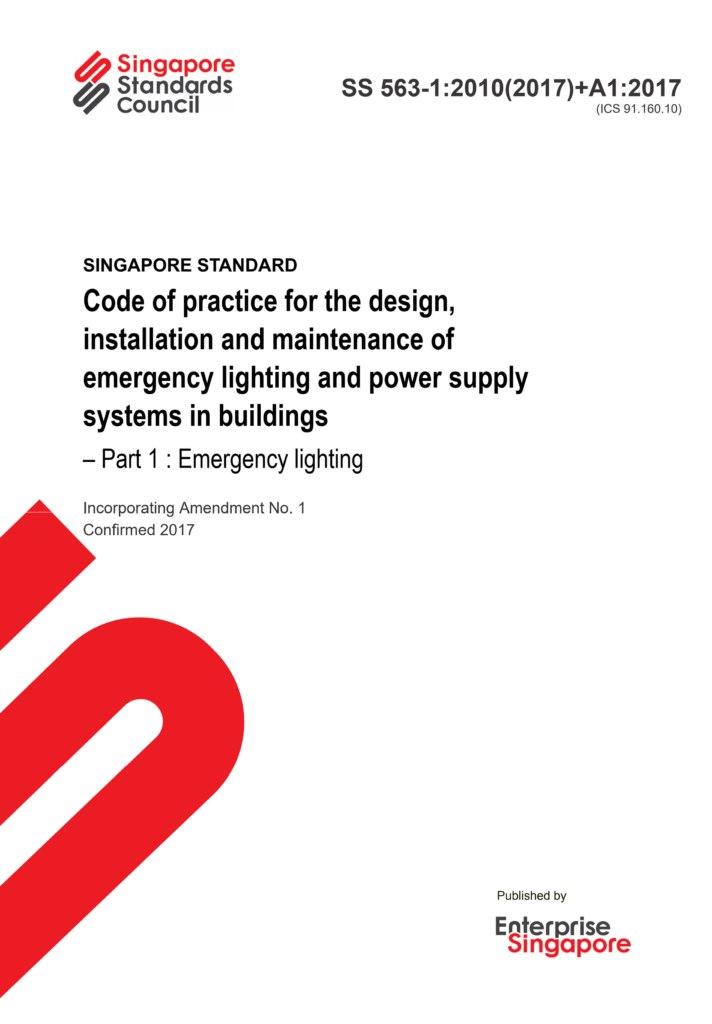
Installation Requirements
4. Equipment and Components
- Luminaires: Use luminaires specifically designed for emergency lighting and compliant with relevant standards.
- Power Supply: Ensure a reliable power supply, including battery backup or emergency generators, to maintain lighting during power outages.
- Control Systems: Install control systems that automatically switch on emergency lighting in the event of a power failure.
5. Placement and Spacing
- Strategic Placement: Position luminaires to provide uniform lighting along escape routes and in critical areas.
- Spacing: Determine the spacing of luminaires based on the required illumination levels and the characteristics of the escape routes and open areas.
Maintenance and Testing
6. Routine Maintenance
- Regular Inspections: Conduct regular inspections of emergency lighting systems to ensure they are functioning correctly.
- Component Testing: Test batteries, luminaires, and control systems at specified intervals to verify their operation.
7. Testing Procedures
- Monthly Tests: Perform monthly functional tests to check the operation of emergency lighting luminaires and control systems.
- Annual Tests: Conduct annual full-duration tests to ensure the system can operate for the required duration (e.g., 1 hour, 3 hours).
Documentation and Records
8. Documentation
- System Design: Maintain documentation of the emergency lighting system design, including layout plans and specifications.
- Testing Records: Keep detailed records of all testing and maintenance activities, including dates, results, and any corrective actions taken.
Compliance and Certification
9. Compliance
- Regulatory Requirements: Ensure compliance with local regulations and standards for emergency lighting.
- Best Practices: Follow industry best practices for the design, installation, and maintenance of emergency lighting systems.
10. Certification
- Certified Components: Use certified luminaires and components that meet relevant standards.
- Professional Certification: Ensure that installation and maintenance are carried out by certified professionals.
Example Compliance Checklist
| Activity | Frequency | Description |
|---|---|---|
| Illumination Level Verification | Initial | Verify that illumination levels meet the minimum requirements. |
| Monthly Functional Tests | Monthly | Perform functional tests of all emergency lighting components. |
| Annual Full-Duration Tests | Annually | Conduct full-duration tests to ensure system reliability. |
| Regular Inspections | Quarterly | Inspect the system to identify and address any issues. |
| Documentation Maintenance | Ongoing | Maintain and update system design and testing records. |
| Compliance Verification | Annually | Verify compliance with local regulations and standards. |
Conclusion
SS 563-1:2010(2017) provides comprehensive guidelines for the design, installation, and maintenance of emergency lighting systems to ensure safety during emergencies. Adhering to this standard helps building owners and operators provide reliable emergency lighting, facilitating safe evacuation and reducing the risk of injury. For detailed procedures and specific requirements, refer to the full SS 563-1:2010(2017) document and consult with professionals experienced in emergency lighting systems.
Note: All Password are [“salaimep” or “salaimep.com”]
Download |OneDrive, Google Drive
Also Download – SS 555: 2010 Protection Against Lightning PDF Download
Alternative Download – SS 563-2:2010(2017) Installation Requirements and Maintenance Procedures
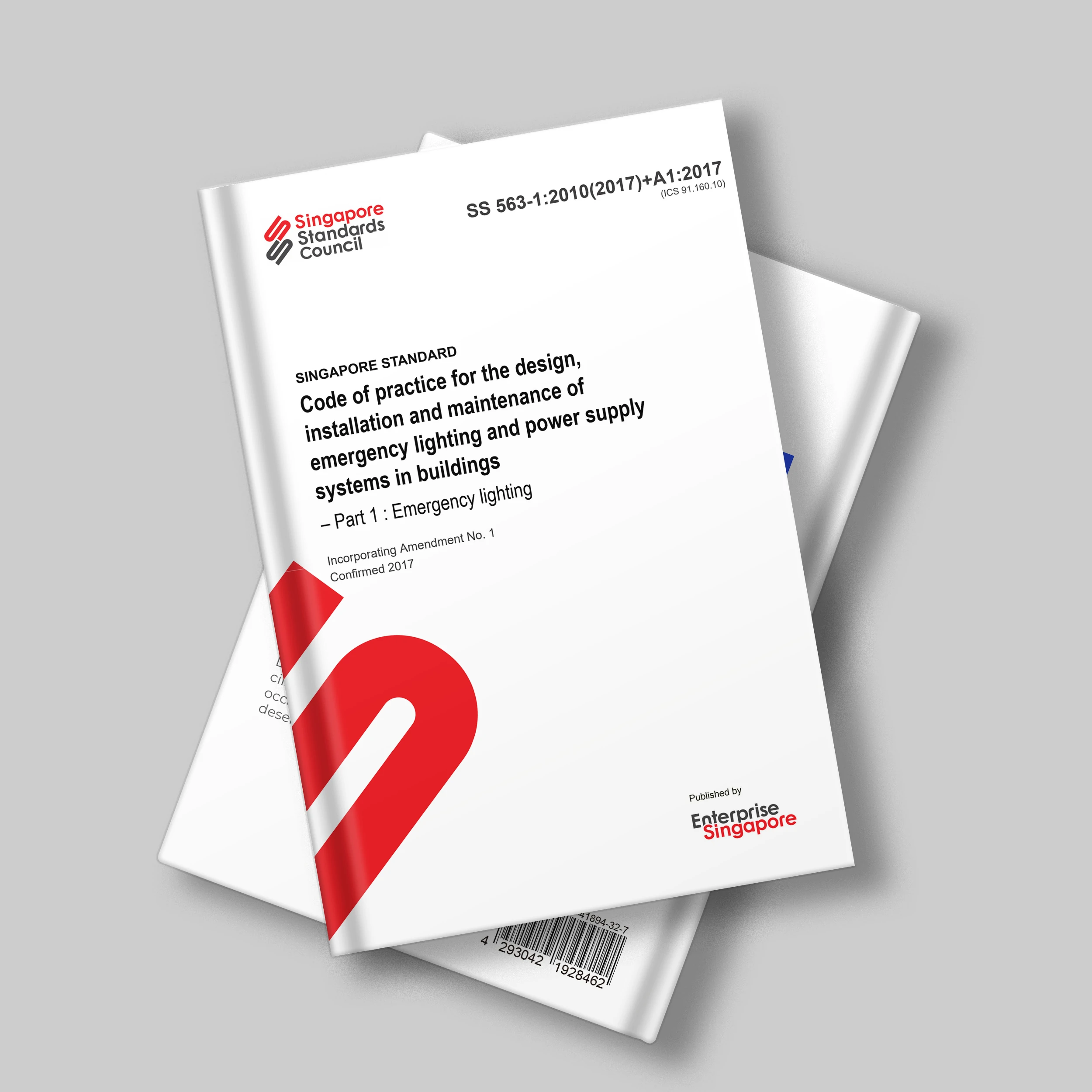
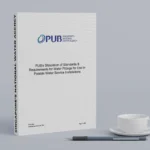
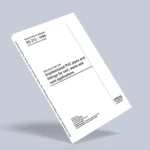




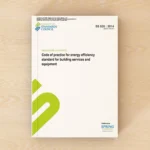
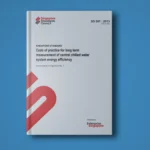
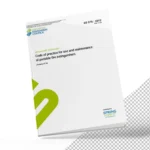
1 thought on “SS 563-1: 2010(2017) Emergency Lighting PDF Download”